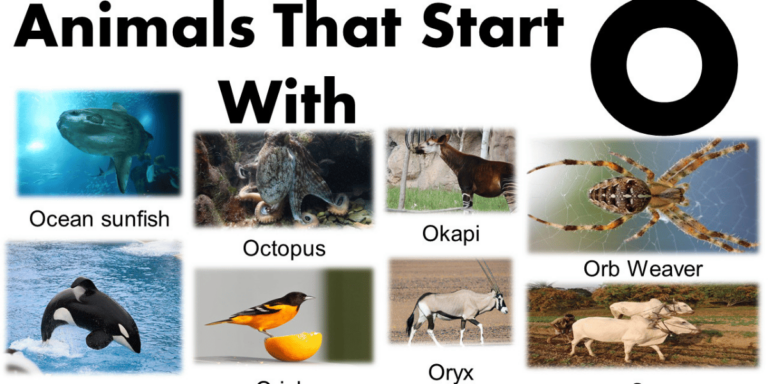Amphibians: List of Amphibians with Interesting Facts

Amphibians represent a fascinating ensemble of creatures characterized by a unique life cycle. Their journey from early stages to adulthood involves a series of transformations, encompassing physiological advancements that are seldom observed in other realms of the animal kingdom. Exploring the definition of amphibians and delving into the diverse types that exist, this piece aims to offer insights into the world of amphibians. It will present an overview of these remarkable animals, accompanied by a comprehensive list of amphibian species along with intriguing facts about each.
What Is an Amphibian?
Amphibians, classified as vertebrate animals, possess four limbs and are characterized as cold-blooded (ectothermic). Typically, their life cycle involves laying and hatching eggs in water, followed by a transformative process that occurs both internally and externally.
During the early stages of their development, amphibians usually rely on gills for respiration, which then transition into lungs as they mature into their adult form. Notably, these creatures can also respire through their skin. As they progress to adulthood, some amphibians undergo the development of limbs, while others may shed their tails.
Belonging to the Amphibia class, with the sub-class Lissamphibia, the world is home to approximately 8,000 species of amphibians, with an overwhelming majority being frogs, accounting for about ninety percent of all amphibian species.
Given their ectothermic nature and affinity for watery habitats, amphibians are commonly found in warmer regions, primarily dwelling in freshwater environments. Despite this preference, certain species can endure colder climates, with some even thriving in northern regions such as Siberia and Alaska. Additionally, certain amphibians have adapted to live in forested or subterranean habitats.
Types of Amphibians
From a scientific perspective, amphibians can be classified into three distinct orders: Apoda, Anura, and Urodela. The Apoda category encompasses a group of creatures commonly known as Caecilians, which resemble worms and are predominantly found in tropical regions spanning multiple continents.
Representing the well-known frogs and toads, the Anura order comprises approximately 5,000 species globally. Renowned for their remarkable jumping prowess, distinctive body structures, and a life cycle that involves a metamorphosis from eggs to tadpoles and ultimately into adults, Anura species are widely recognized.
The Urodela order encompasses salamanders and newts, characterized by their ability to retain their tails throughout their adult lives. These amphibians lay their eggs in moist environments, possess gills during their juvenile phase, and navigate through walking or swimming, without displaying the pronounced jumping capabilities observed in the Anura group.
List of Amphibians
Amphibian List
- Giant Salamanders
- Tree Frogs
- Newts
- South Asian Frogs
- Mudpuppies
- Poison Frogs
- Caecilians
- Asiatic Salamanders
- True Frogs
- Pacific Giant Salamanders
- True Toads
- Mole Salamanders
- Sirens
- Hyla
- Racophorus
Amphibians | Facts & Pictures
Giant Salamanders
Hailing from the southern regions of China, specifically the Pearl River area, the South China Giant Salamander (Andrias sligoi) holds the distinction of being the largest known living amphibian globally, capable of stretching beyond five feet and five inches in length.

Tree Frogs
Comprising a diverse assemblage of around 800 species, tree frogs are identifiable by their unique toe structure, characterized by a claw-like terminal phalanx as the final bone in their toes. Ranging in size from under an inch to over five inches, these amphibians sustain themselves by preying on insects and various other invertebrates.

Newts
Newts, classified within the Pleurodelinae family, which falls under the sub-family of Urodela, possess distinctive physical features including webbed feet and tails that often resemble paddles. Distinguishing themselves from salamanders, newts lead semi-aquatic lifestyles, while salamanders primarily breed and lay eggs in water.

South Asian Frogs
Often known as Goose Frogs, the South Asian Frogs are a subset of the Megophryidae family. Their habitat spans across various regions including Indonesia, parts of Southeast Asia, southern China, Nepal, and the Philippines. These amphibians are recognized for their remarkable leaf-like camouflage, characterized by skin that can appear pointed, resembling the edges of a leaf.

Mudpuppies
Mudpuppies are fairly large salamanders that are also known as Waterdogs. The Common Mudpuppy (Necturus maculosus) can grow to about 13 inches on average and is native to ponds, lakes, and rivers in eastern North America — dieting on mollusks, insects, and earthworms.
Poison Frogs
Poison Frogs are also known as Poison Dart Frogs, due to the fact that the toxins their skin secretes have historically been used to cover the tips of hunting darts. Inhabiting the Amazon rainforest and Central America, Poison Frogs are noted for their small size and extremely bright colors.
Caecilians
Caecilians are amphibians that are snake-like in appearance and inhabit areas of India, Africa, South, and Central America. They are burrowing animals and live under leaves and soil. Caecilians have a recessed mouth, long bodies, no legs, and strong jaws — and feed on snakes, insects, and worms.
Asiatic Salamanders
Asiatic Salamanders are salamanders that belong to the Hynobiidae family. They are common to Asia, with about half of the species found exclusively in Japan. They are related to Giant Salamanders and can inhabit countries such as China, Russia, Iran, Japan, and Afghanistan.
True Frogs
True Frogs are a category of frogs that consist of some 600 species of the family Ranidae. They are noted for having webbed toes, long legs, and a bony chest bone. The Bullfrog (Lithobates catesbeianus) is a large species of True Frog native to eastern North America.
Pacific Giant Salamanders
Pacific Giant Salamanders are salamanders that belong to the Dicamptodon genus. They are fairly large salamanders that can grow up to a foot in length. There are four main species of Pacific Giant Salamander (Coastal, California, Cope’s, and Idaho) and live in the Pacific Northwest.
True Toads
True Toads belong to the Bufonidae family of amphibians and consist of some 500 species. They are noted for having bumpy, warty skin, short legs, and parotoid glands on the sides of their heads — glands that are used to secrete predator-deterring neurotoxins.
Mole Salamanders
Mole salamanders are a group of salamanders that belong to the family Ambystoma. They are known for burrowing holes (or using the holes of other animals) for hibernation purposes. The Spotted salamander (Ambystoma maculatum) is the state salamander of South Carolina and Ohio.
Sirens
Sirens are native to the southeastern United States and the Mississippi River. They are long, snake-like salamanders that have short front legs, gills, and gill slits, even as adults. They have no hind legs and feed on plants and insects.





